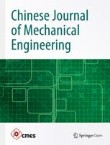Special Issue on Human-Centric Intelligent Manufacturing in Industry 5.0
Submission Deadline: 28 February 2025
Guest Editors
Prof. Qiyin Lin, Xi'an Jiaotong University, China
Prof. Ying Liu, Cardiff University, UK
Assoc. Prof. Hao Gong, Beijing Institute of Technology, China
Assoc. Prof. Junliang Wang, Donghua University, China
Assoc. Prof. Bingtao Hu, Zhejiang University, China
Special Issue on Active Sensing, Safety Risk Assessment, and Advanced Control for Intelligent Chassis Systems
Submission Deadline: 31 December 2024
Guest Editors
Dr. Yan Wang, The Hong Kong Polytechnic University, China
Prof. Guodong Yin, Southeast University, China
Prof. Yang Shi, University of Victoria, Canada
Prof. Haiping Du, University of Wollongong, Australia
Prof. Lu Xiong, Tongji University, China
Prof. Lin Hu, Changsha University of Science & Technology, China
Dr. Chao Huang, The Hong Kong Polytechnic University, China
Dr. Henglai Wei, Beihang University, China
